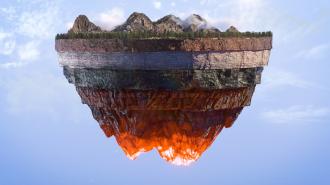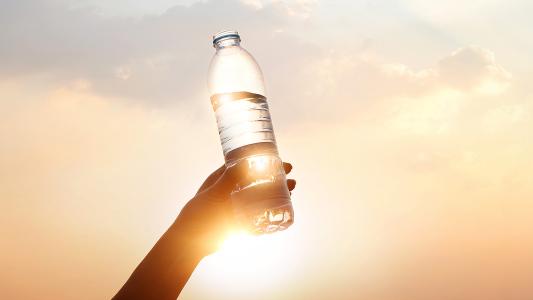MIT spinoff Quaise Energy is building a drill that vaporizes rock — so that we can tap into the geothermal energy miles below our feet.
Geothermal energy: Earth’s core is as hot as the surface of the sun, but we don’t have to go too far below the surface to start feeling the heat — in the Mponeng gold mine in South Africa, which has a depth of 2.5 miles, rock temperatures can reach 140 degrees Fahrenheit.
Geothermal power generates electricity from this natural heat, and there’s enough of it to meet the energy needs of the entire world — if you can get to it.
Quaise is developing tech to drill miles deeper than the deepest hole ever drilled with physical drill bits.
The problem: Current drilling equipment, like that used for oil and gas, can’t withstand the super high temperatures and pressure at extreme depths, so our supply of geothermal power is mostly limited to volcanic regions (like Iceland or El Salvador) or hot water reservoirs near the surface.
Drilling with existing technology also gets exponentially more expensive the deeper you go — drilling twice as deep costs way more than twice as much.
This drastically limits where we can feasibly build geothermal plants, and good locations are not evenly distributed. This is one reason the U.S. has just 64 geothermal power plants, which produce a scant 0.4% of its electricity.
The idea: Quaise Energy is developing a new kind of drilling system that uses millimeter wave energy to melt and vaporize rock. It claims this system has the potential to drill to depths up to 12 miles — miles deeper than the deepest hole ever drilled with physical drill bits.
At those depths, temperatures will reach several hundreds degrees pretty much wherever you are. And when water gets that hot — “supercritical” — you can extract a ton of energy from it. Pumping water into these super-heated wells could produce steam to spin turbines and generate electricity.
Such a system would theoretically allow us to harness the power of geothermal energy almost anywhere, but Quaise proposes drilling first at the sites of existing traditional fossil fuel power plants.
The U.S. has thousands of these power stations, which burn coal or gas to run steam turbines. That means they already have the infrastructure and equipment in place to harness steam from geothermal energy and send it to the grid.
Looking ahead: Quaise has just raised another $40 million to further develop its drilling technology, and CEO Carlos Araque told Axios the company expects to demonstrate the tech in lab-controlled outdoor conditions this year, reaching depths of 10 meters — a far cry from the miles they’re ultimately aiming for.
However, the company says that a field-ready machine capable of reaching depths between 100 and 1,000 meters should be ready for demos in 2024. Their timeline calls for the first repurposed fossil fuel plant to be using geothermal power to generate electricity by 2028, although it’s not clear where or at what depth they’d be drilling at that point.
“By using current infrastructure, we can re-power our planet using significantly fewer resources.”
Mark Cupta
The big picture: Quaise has a lot of work ahead of it to reach its deep goals, but if the company is successful in making geothermal widely accessible, the transition away from fossil fuels could become a lot simpler.
We wouldn’t need to clear huge swathes of land for solar installations and wind turbines or install huge battery backups — we could just drill down next to existing power plants and essentially plug geothermal energy right into it. The grid could function much the same way it does now.
“Quaise’s approach offers a lower geographical and environmental impact,” Mark Cupta, Managing Director at Prelude Ventures, one of Quaise’s investors, told ZDNet. “By using current infrastructure, we can re-power our planet using significantly fewer resources.”
We’d love to hear from you! If you have a comment about this article or if you have a tip for a future Freethink story, please email us at [email protected].






